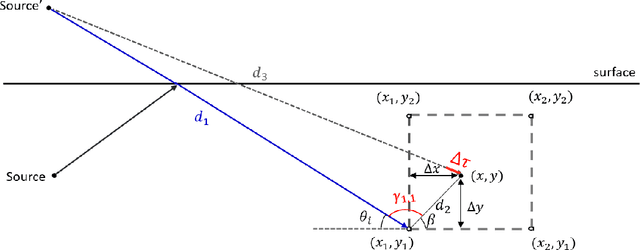Benjamin Henson
School of Physics, Engineering and Technology, University of York, U.K
Performance Evaluation of a Full-Duplex UWA System in Lake Experiments
Jan 18, 2024Abstract:In this work we present a full-duplex (FD) underwater acoustic (UWA) communication system simultaneously transmitting and receiving acoustic signals in the same frequency bandwidth. To simplify the FD hardware, the system exploits a recently designed transducer capable of simultaneously transmitting and receiving signals. The key challenge of implementing an FD system is to cancel at the near-end receiver the strong self-interference (SI) from the near-end transmitter. By using advanced adaptive filtering algorithms providing high accuracy channel estimates, a high level of SI cancellation can be achieved when the far-end signal is absent. However, the SI channel estimation performance is limited in FD scenarios since the far-end signal acts as an interference when estimating the near-end SI channel. In this paper, we propose an FD UWA communication system which alternates between the SI cancellation and far-end data demodulation. An adaptive Rake combiner with multipath interference cancellation is implemented to improve the demodulation performance in time-varying multipath channels. The performance of the FD UWA system is evaluated in lake experiments. It is shown that the proposed adaptive Rake combiner with multipath interference cancellation significantly outperforms the conventional Rake combiner in all the experiments. The experimental results demonstrate that, with the new Rake combiner, the detection performance of the proposed FD UWA system is comparable with that of the half-duplex system.
Interference Cancellation for UWA Random Access Data Packet Transmission
Jan 18, 2024Abstract:In underwater acoustic (UWA) random access communication networks with multiple users and data packet transmissions, the packet collisions are the main cause of the network performance degradation. The aim of this paper is to investigate interference cancellation (IC) techniques capable of resolving such collisions in a low-complexity modem with single-carrier modulation and single transducer. More specifically, in this modem, the IC is used at multiple stages of the receiver. Firstly, the IC is performed for cancelling the multipath interference to improve the equalization performance in comparison with the linear equalization and Rake combining. Secondly, the IC removes the interference from collided data packets within extracted signal segments after identifying the collisions. Finally, the IC is applied to the received baseband signal to improve the data packet detection. The modem performance is investigated in a lake experiment with intensive multipath channels. The experimental results demonstrate high detection performance of the proposed modem design and show that the proposed IC techniques can significantly improve the throughput of random access UWA networks.
Target detection using underwater acoustic communication links
Dec 18, 2023



Abstract:Underwater monitoring and surveillance systems are essential for underwater target detection, localization and classification. The aim of this work is to investigate the possibility of target detection by using data transmission between communication nodes in an underwater acoustic (UWA) network, i.e, re-using acoustic communication signals for target detection. A new target detection method based on estimation of the time-varying channel impulse response between the communication transmitter(s) and receiver(s) is proposed and investigated. This is based on a lake experiment and numerical experiments using a simulator developed for modeling the time-varying UWA channel in the presence of a moving target. The proposed detection method provides a clear indication of a target crossing the communication link. A good similarity between results obtained in the numerical and lake experiments is observed.
 Add to Chrome
Add to Chrome Add to Firefox
Add to Firefox Add to Edge
Add to Edge